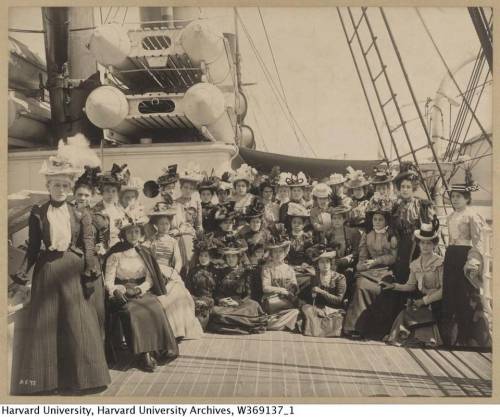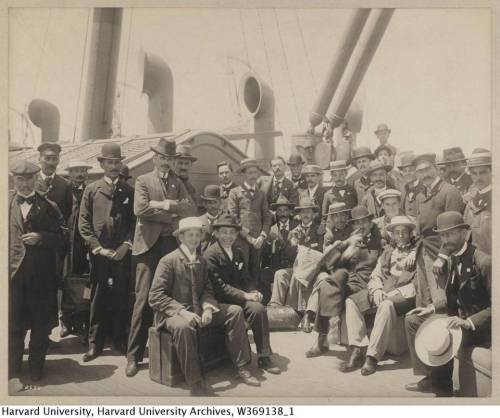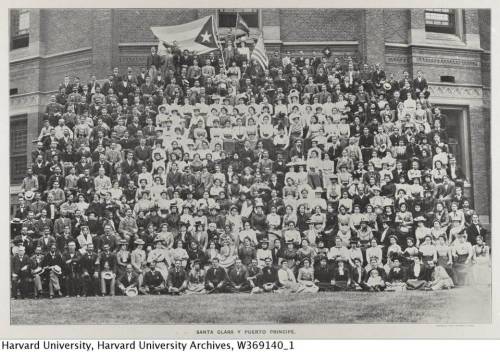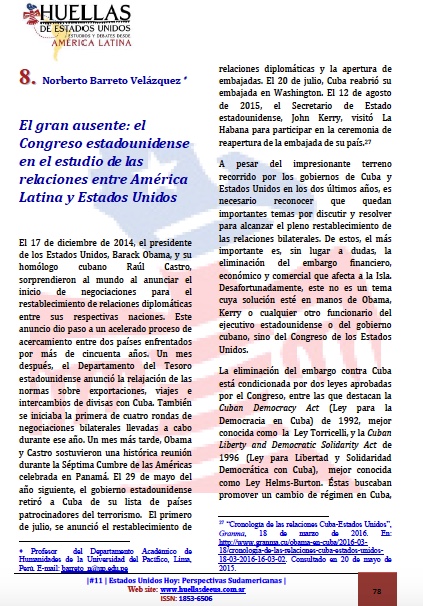
Muhammad Ali was boxing heavyweight champion of the world for much of the 1960’s. During this decade he was admired internationally, but not in his native country of the United States. Chief reason for this was his vocal opposition to serving in the U.S. Army, or any other branch of the military which, as fate would have it, was the same time period as the U.S. military intervention into Vietnam.
Ali was controversial ever since becoming famous. This applies to both his boxing style (in which he moved away from his opponent’s punches and also specialized in moving laterally, rather than the conventional method of moving toward an opponent’s punches and vertically) and also his behavior outside the ring (such as his proclamation that he was renouncing Christianity and his given name and was joining the National of Islam). Looking to Ali as an example, more and more athletes the world over, and especially American black athletes, began to become influential members of society. No longer would athletes be silent automatons mindlessly providing sports entertainment.
While in Miami in 1966 awaiting word from his draft board when to report for induction, Ali was told by a news wire reporter that he was eligible for the draft. Not long afterwards, many television news reporters arrived in their television station trucks, parked outside of Ali’s home, and began annoyingly asking for him to step outside and make a statement. What happened next was, and still is, unclear. For we reporters who have covered stories in which numerous reporters place numerous microphones in front of an interviewer and ask him or her to speak, we know that, despite technological advances, something can be said and not fully understood. This now happened with Ali. Reporters were asking him many questions and he clearly began to lose his temper. After he was asked the question “What do you think of the Viet Cong ?” many reporters quoted him as saying “I ain’t got no quarrel with them Viet Cong.” However Robert Lipsyte of the New York Times and some other reporters who were present noted that Ali answered with “I ain’t got nothing against them Viet Cong.” In either case, whatever Ali said began a series of social and politically vindictive attacks.
Here we have another first, in this two-part story, that resonates with today’s times. If the reader is a professional athlete, the lesson is the following: Be careful and deliberate what you say in public and furthermore, be honest and sincere in said speech. With the gift now of hindsight, we now know that Ali did not do the first, but did the second. Also, whatever one’s opinion of Ali and his refusal to be drafted, one cannot deny Ali’s courage in standing up for his religious convictions. It would have been very, very easy for him to simply move to Canada to live and avoid the draft (as thousands of men did) — and thus be able to obtain boxing licenses in other countries and to fight for millions of dollars — but as Ali often said, “The United States is my home country. I don’t run away from home.”
Something else needs to be recorded here, even though the following is slightly off our narrative: many Americans — such as liberals, Democrats, and especially hippies — took up Ali’s cause with gusto, but Ali frequently did not reciprocate their feelings. For example, the piously religious Ali (he has never smoked or drunk a drop of alcohol in his life, and, as per Muslim custom, he avoids all pork products and prays five times daily) was repulsed by the hippies’ fondness for recreational alcohol and drugs. Even though Ali is now quite aware that due to his Parkinson’s Disease he must take medications, he still, after all of these years, dislikes taking these medications and also putting any sort of chemicals into his body. Many “long-hairs” (to use a popular word of the 1960’s and 1970’s) spent much of their time doing the polar opposite. Ali strongly disliked long hair on men and scorned men who burned their draft cards. Even when he spoke before audiences composed mostly of young people, he was always well groomed (he has always been narcissistic about his appearance) and wore a well-cut suit and matching tie.
After Ali heard black leader Stokely Carmichael say “ain’t no Viet cong ever called me nigger,” Ali borrowed this saying and modified it for himself to be “No Viet Cong ever called me nigger.” The Illinois Athletic Commission (which issued boxing licenses in that state) ordered Ali to appear before them and publicly apologize for his anti-war remarks. Usually Ali avoided such orders, but this time he did appear before the commission and publicly refused to apologize.
Thus another lesson to be learned from this complicated story. To wit: if a sports commission tries to mandate how an athlete conducts their personal life, the commission is likely to face criticism.
In February of 1966, Ali’s attorneys filed their famous client’s first request for military draft exemption status. The exemption was mostly based on finite, picky legal grounds. However three weeks later, in mid March, the lawyers adopted a new legal tactic. They argued that since Ali was a minister of the Nation of Islam, and since as per the Holy Koran, pious Muslims could only fight in holy wars, Ali should be exempted from the legal draft. To many Americans, this latter legal tactic sounded dubious. How, they wondered, could Ali proclaim that his religious belief in international brotherhood and peace made him exempt from the military draft when he beat people up for a living? This particular draft exemption was denied, and then his team of lawyers filed an appeal. However as per federal law, before the appeal could be heard (before ae state appeal board), the U.S. Justice Department had to review the case and decide whether or not Ali was sincere in his beliefs. A retired judge named Lawrence Grauman heard the case.
Ali’s fate rested in this judge’s hands. To most people’s surprise, but not to Ali himself, Grauman ruled in Ali’s behalf. “I recommend that the registrant’s claim for conscientious objector status be sustained,” wrote Grauman. Despite the ruling, the federal government pressed onward, ordering Ali to report for military induction in Houston, where he had moved to lead a mosque.
On April 28, 1967, Ali went. When an Army officer said, “Mr. Cassius Clay, you will please step forward and be inducted into the United States Army,” Ali refused to do so. “Furthermore, Ali faced imprisonment for his action and was barred from boxing while his case was litigated. He called himself ‘The People’s Champion’ and continued to be recognized as the world heavyweight title holder in Great Britain and Japan,” reads a paragraph of Ali’s biography in the 1999 reference book, The Boxing Register International Boxing Hall of Fame Official Record Book.
From this time, the late 1960’s to today, athletes would no longer mindlessly do what their bosses, and other well-established institutions (military, political, religious, etc.) told them to do if they disagreed. Atop that, if these athletes refused to do so, they would try to make their points in the courts. Major League Baseball St. Louis Cardinals star outfielder Curt Flood’s case to the U.S. Supreme Court (which he would lose) proclaiming that the reserve clause in baseball is illegal is but one example.
From this point onwards, Muhammad Ali was considered a pariah to millions of Americans. Denied a right to make a living in his home country, he did all sorts of things: spoke for fees on college campuses, starred in a Broadway musical titled “Buck White” (where he surprised all by displaying a very melodic and pleasant singing voice), and doing pro-bono work for charities. He continued to make his case to anybody who cared to listen. The day of the quiet, taciturn sports star was over. Singer-songwriter Paul Simon neatly captured frustrated Americans views about pushy athletes with the line, “Where have you gone Joe DiMaggio? Our nation turns its lonely eyes to you” in the 1968 song “Mrs. Robinson.”
Ali’s case wound its way upwards through the judicial system all the way to the Supreme Court of the United States after the Fifth Circuit confirmed his June 20, 1967 conviction (on a felony charge of refusing to be drafted). He remained free on appeal. From March 1967 to October 1970, due to his military draft problems, he was inactive in boxing. The case got to the Supreme Court in January of 1971 and Justice William Brennan convinced his colleagues to grant certiorari (approval to hear the case). As Justice Thurgood Marshall had been Solicitor General when Ali was originally convicted, he recused himself. (Another reason he did so, known to his colleagues and their respective law clerks but less well-known to the general public, was that he despised the Black Muslims.)
In their 1971 book The Brethren: Inside The Supreme Court, Scott Armstrong and Bob Woodward write that “On Friday, April 23… the [Supreme Court Justices’] conference decided, 5 to 3, that it agreed with [Solicitor General Erwin N.] Griswold. Ali was not really a conscientious objector and should go to jail.” Yet Ali didn’t. This was thanks to Justices John Harlan and Potter Stewart (though Ali didn’t learn this for years).
Harlan was assigned to write the majority opinion by Chief Justice Warren Burger, but before he did so, Harlan (who had served in the military during World War II) read the Nation of Islam treatise book, Message To The Black Man in America, at the suggestion of his law clerks. In it was stated that Black Muslims could fight holy wars, but the fact that Ali obviously disapproved of ALL wars convinced Harlan to change his vote. This now dead-locked the Justices vote at four for conviction and four for Ali’s freedom. If the court stayed deadlocked Ali would go to jail, but as it is long tradition that deadlocked cases do not come with written legal opinions by Supreme Court Justices, Ali would never know why he lost the case and never would really know why he went to jail.
Justice Stewart came up with a solution: he and his law clerks discovered that a state appeals board gave no reason for the denial of Ali’s conscientious objector status. With this in mind, and also considering that there are three legal grounds a claimant must meet for conscientious objector status, it would therefore be impossible to determine on which of the three legal grounds the U.S. Department of Justice decided to proceed with its case against Ali. Therefore, went this legal argument, Ali should go free. In a unanimous 8-0 decision, that is the legal conclusion that the eight Supreme Court Justices came to.
Ali heard the news that he had won when he was shopping in a grocery store in Chicago and a grocery clerk came over and hugged him and told him the news. Ali then thanked Allah and the Supreme Court, in that order, then immediately went to a South Side gym to work out.
Angelo Dundee, Ali’s life-long boxing trainer, was interviewed many times by this reporter and, when reflecting on Ali’s career, told me, “We never saw Muhammad Ali at his peak. He was out of the ring for three and a half years and those three and a half years [in Ali’s case, when he was just short of age 25 to the age of 28] are primary years for most boxers. Who knows what he could have done?” Herewith our final lesson: whenever a prominent athlete takes issue with a government agency — or worse, as in Ali’s case, the federal government and the military — he or she will somehow, someway be punished—even if the punishment isn’t just.
SOURCES FOR THIS TWO-PART STORY
Websites: www.aavw.org; www.oyez.org; www.scotus.com; www.hbo.com.
Books: “Muhammad Ali’s Greatest Fight: Clay v. The United States of America” by Howard L. Bingham and Max Wallace; “The Boxing Register International Boxing Hall of Fame Official Record Book, 1999 Edition”; “The Brethren: Inside The Supreme Court” by Scott Armstrong and Bob Woodward; “The Muhammad Ali Reader,” Edited by Gerald Early; “Muhammad Ali: The Greatest” by John Hennessey; “The Greatest: My Own Story” by Muhammad Ali with Richard Durham; “Muhammad Ali: The Greatest Of All Time” by Robert Cassidy, “King of the World: Muhammad Ali and the Rise of an American Hero” by David Remnick.















